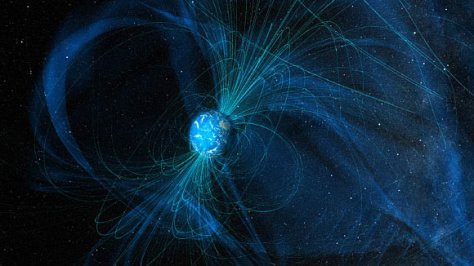We’ve all been there. You’re around new people and you just want to impress them. It can be easy to pretend you know about movies, politics, or science just to get through an awkward situation. But contrary to what feels most natural, a new series of five studies from Pepperdine University shows that those who can admit when they don’t know something tend to actually have more knowledge. If you want to make those people think you’re smart, maybe the best thing to say is “I don’t know.”

Intellectual humility (IH) means having the insight and honesty to admit when you’re ignorant about or inexperienced with an issue. Scientists have long associated general humility — defined as the virtue of acknowledging your limitations — with more academic learning and better grades. That’s likely because you have to realize you have things to learn in order to learn successfully.
While humility is about recognizing that you have weaknesses in general, IH deals with intellectual fallibility specifically. A person is intellectually humble when they realize that their ideas and opinions might be incorrect. It involves an openness to new information and, according to the authors of the new study, “a healthy independence between intellect and ego.”
For the study, which was led by Elizabeth Krumrei-Mancuso, the team of researchers had one question: Is there a knowledge benefit to admitting intellectual fallibility? To find out, they ran not one, not two, but five separate experiments. They engaged nearly 1,200 participants in their study, and evaluated them using a number of questionnaires testing their cognitive abilities, measuring their own predictions of their cognitive abilities, and, of course, rating their levels of intellectual humility.
For that last part, they used different methods in different studies to get a more well-rounded set of results. One IH questionnaire used eight questions to assess participants on two elements: the “Knowing-It-All” subscale, which judged their attitudes of intellectual superiority, and the “Intellectual Openness” subscale, which assessed how open they were to learning from others. In other studies, they used the 22-question “Comprehensive Intellectual Humility Scale,” which assesses participants on four elements: independence of intellect and ego, openness to revising one’s viewpoint, respect for others’ viewpoints, and lack of intellectual overconfidence. The five studies were used to examine past learning, thinking styles, traits, and motivations.
Krumrei-Manusco and her team found that IH was associated with more general knowledge, though not greater cognitive ability. That is, people who are intellectually humble aren’t smarter, but they do tend to know more than those who aren’t. The researchers believe this leg-up on knowledge is thanks to the fact that IH leads directly to behaviors that can lead people to learn more — specifically, things like reflective thinking, intellectual curiosity, and openness. They also found that high IH correlated with less “social vigilantism,” which could mean that intellectually humble people work better with others. High IH was also associated with the desire to learn for the sake of learning.
The researchers noted that past studies also suggest that as people gain knowledge, they see an increase in intellectual humility. Basically, humility and knowledge are linked, but it’s hard to know in which direction. Maybe the more you learn, the more you realize you have to learn. Or maybe knowing that makes you more receptive to learning anything at all.
The best thing to remember is that curiosity seems to be a good thing. The world is big, and it’s impossible to know everything. At your next dinner party, ask questions and admit your own cluelessness. It might make you a little less clueless next time.
References: (1) Elizabeth J. Krumrei-Mancuso, Megan C. Haggard, Jordan P. LaBouff & Wade C. Rowatt, “Links between intellectual humility and acquiring knowledge”, Journal of positive psychology, vol. 15, no. 2, pp. 155-170, 2020.. (2) https://www.criticalthinking.org/pages/valuable-intellectual-traits/528 (3) Wade C. Rowatt , Christie Powers , Valerie Targhetta , Jessamy Comer , Stephanie Kennedy & Jordan Labouff, “Development and initial validation of an implicit measure of humility relative to arrogance”, Journal of positive psychology, vol 1, issue 4, Pages 198-211, 2006.. (4) Krumrei-Mancuso, E. J., & Rouse, S. V. (2016). The development and validation of the Comprehensive Intellectual Humility Scale. Journal of Personality Assessment, 98, 209-221.






